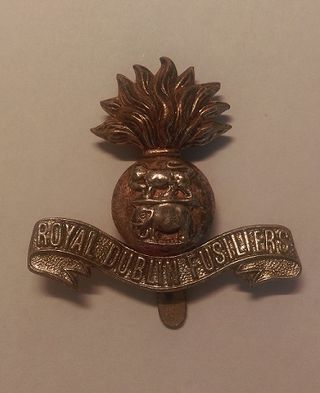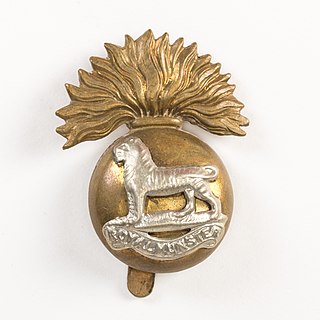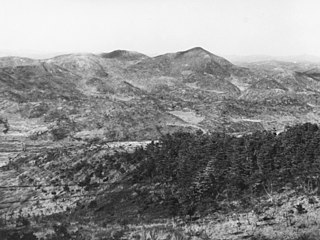
The Battle of Dogger Bank was a naval engagement during the First World War that took place on 24 January 1915 near the Dogger Bank in the North Sea, between squadrons of the British Grand Fleet and the Kaiserliche Marine. The British had intercepted and decoded German wireless transmissions, gaining advance knowledge that a German raiding squadron was heading for the Dogger Bank and ships of the Grand Fleet sailed to intercept the raiders.

The Royal Fusiliers (City of London Regiment) was a line infantry regiment of the British Army in continuous existence for 283 years. It was known as the 7th Regiment of Foot until the Childers Reforms of 1881.

Major Cuthbert Bromley VC was an English recipient of the Victoria Cross, the highest and most prestigious award for gallantry in the face of the enemy that can be awarded to British and Commonwealth forces.

William Thomas Dartnell, VC, also known as Wilbur Taylor Dartnell, was an Australian-born soldier, actor and a recipient of the Victoria Cross, the highest award for gallantry in the face of the enemy that can be awarded to British and Commonwealth forces. Born in Melbourne, he served in the Second Boer War as a teenager and later in the Bambatha Rebellion of 1906. He married, managed his own business and worked as a professional actor before immigrating to South Africa in 1912 or 1913.

The Northumbrian Division was an infantry division of the British Army, formed in 1908 as part of the Territorial Force with units drawn from the north-east of England, notably Northumberland, Durham and the North and East Ridings of Yorkshire. The division was numbered as 50th (Northumbrian) Division in 1915 and served on the Western Front throughout the First World War. Due to losses suffered in the Ludendorf Offensive in March 1918 it had to be comprehensively reorganized. It was once again reformed in the Territorial Army as the Northumbrian Division in 1920.

The Royal Dublin Fusiliers was an infantry regiment of the British Army created in 1881 and disbanded in 1922. It was one of eight 'Irish' regiments of the army which were raised and garrisoned in Ireland, with the regiment's home depot being located in Naas. The regiment was created via the amalgamation of the Royal Bombay Fusiliers and Royal Madras Fusiliers, two army regiments stationed in India, with militia units from Dublin and Kildare as part of the Childers Reforms. Both battalions of the regiment served in the Second Boer War.

The Royal Munster Fusiliers was a line infantry regiment of the British Army from 1881 to 1922. It traced its origins to the East India Company's Bengal European Regiment raised in 1652, which later became the 101st Regiment of Foot. The Royal Munster Fusiliers were formed in 1881 by the merger of the 101st Regiment of Foot and the 104th Regiment of Foot. One of eight Irish regiments raised largely in Ireland, it had its home depot in Tralee and served as the county regiment for Cork, Clare, Limerick and Kerry. At its formation the regiment comprised two regular and two militia battalions.

The African theatre of the First World War comprises campaigns in North Africa instigated by the German and Ottoman empires, local rebellions against European colonial rule and Allied campaigns against the German colonies of Kamerun, Togoland, German South West Africa, and German East Africa. The campaigns were fought by German Schutztruppe, local resistance movements and forces of the British Empire, France, Italy, Belgium, and Portugal.

The East African campaign in World War I was a series of battles and guerrilla actions, which started in German East Africa (GEA) and spread to portions of Mozambique, Rhodesia, British East Africa, the Uganda, and the Belgian Congo. The campaign all but ended in German East Africa in November 1917 when the Germans entered Mozambique and continued the campaign living off Portuguese supplies.

The 25th (Frontiersmen) Service Battalion, Royal Fusiliers was a British Army unit that served during World War I. It was raised by the Legion of Frontiersmen.

The Senussi campaign took place in North Africa from November 1915 to February 1917, during the First World War. The campaign was fought by the Kingdom of Italy and the British Empire against the Senussi, a religious order of Arabic nomads in Libya and Egypt. The Senussi were courted by the Ottoman Empire and the German Empire. Recognising French and Italian threats, the Ottoman Sultan Abdulhamid II had twice sent his aide-de-camp Azmzade Sadik El Mueyyed to meet Sheikh Muhammed El Mehdi El Senussi to cultivate positive relations and counter the west European scramble for Africa. In the summer of 1915, the Ottomans persuaded the Grand Senussi Ahmed Sharif as-Senussi to declare jihad, attack British-occupied Egypt from the west and to encourage insurrection in Egypt to divert British forces.

The First Battle of Maryang-san, also known as the Defensive Battle of Maliangshan, was fought during the Korean War between United Nations Command (UN) forces—primarily Australian, British and Canadian—and the Chinese People's Volunteer Army (PVA). The fighting occurred during a limited UN offensive by US I Corps, codenamed Operation Commando. This offensive ultimately pushed the PVA back from the Imjin River to the Jamestown Line and destroyed elements of four PVA armies following heavy fighting. The much smaller battle at Maryang-san took place over a five-day period, and saw the 1st Commonwealth Division dislodge a numerically superior PVA force from the tactically important Kowang-san, Hill 187, and Maryang-san features.

The Togoland campaign was a French and British invasion of the German colony of Togoland in West Africa, which began the West African campaign of the First World War. German colonial forces withdrew from the capital Lomé and the coastal province to fight delaying actions on the route north to Kamina, where the Kamina Funkstation linked the government in Berlin to Togoland, the Atlantic and South America.
The Battle of Nsanakong or Battle of Nsanakang took place between defending British and attacking German forces during the Kamerun campaign of the First World War. The town of Nsanakong had been occupied by the British on 30 August 1914. On 6 September, German forces attacked, driving the British force over the border back into Nigeria.
The siege of Mora or siege of Moraberg, between Allied and besieged German troops, took place from August 1914 to February 1916 on and around the Mora mountain in northern Kamerun during the Kamerun campaign of the First World War. After more than a year of siege German forces on the mountain surrendered, following the escape of many German troops to the neutral Spanish colony of Río Muni. It was the second longest siege of the war, behind the Siege of Medina.

The 66th Division was an infantry division of the British Army, part of the Territorial Force, which saw service in the trenches of the Western Front, during the later years of the Great War and was disbanded after the war.
During the Battle of Banjo or Battle of Banyo, British forces besieged German forces entrenched on the Banjo mountain from 4 to 6 November 1915 during the Kamerun campaign of the First World War. By 6 November much of the German force had deserted, while the rest surrendered. The battle resulted in victory for the Allies and breakdown of German resistance in northern Kamerun.
The Second Battle of Edea was the German counter-attack against French forces stationed in the village of Edea during the Kamerun campaign of the First World War. Allied forces from Duala occupied the town following the First Battle of Edea in October 1914. The Germans, eager to retake the position attacked on 5 January 1915 but were repulsed by the French force.

The Battle of Lioma was fought between the German Empire and British Empire during the East African Campaign of World War I. Having successfully evaded the Allies since late 1917, the German Schutztruppe under Paul von Lettow-Vorbeck waged a guerilla campaign in Portuguese East Africa, attacking and raiding settlements as well as forts in the search of supplies while inflicting as much damage as possible on the Allies. All the while, the Schutztruppe was chased by the British King's African Rifles, which finally cornered the Germans at the village of Lioma on 30–31 August 1918. Led by George Giffard, the British forces almost managed to encircle and destroy the Schutztruppe, but in the end the Germans broke out and successfully retreated. Although greatly weakened by the fighting at Lioma, the Schutztruppe was thus able to remain active until the end of the war.

Lieutenant-Colonel Daniel Patrick Driscoll was a British Army officer of Irish descent, awarded many military honours for his combat service in Burma, the Union of South Africa, and German East Africa in the First World War.

















